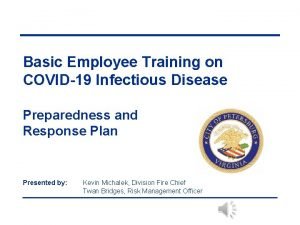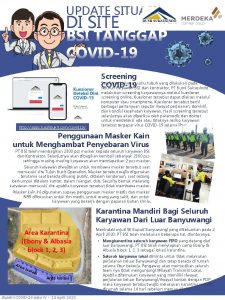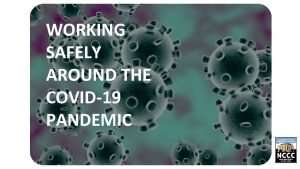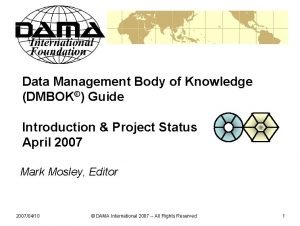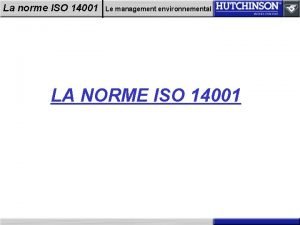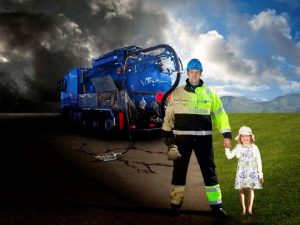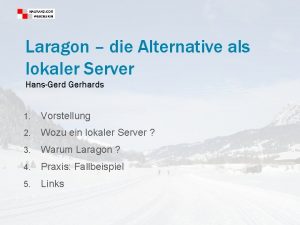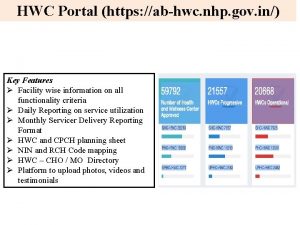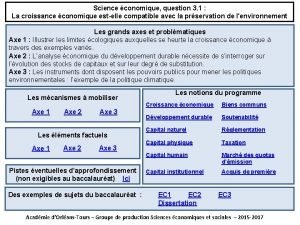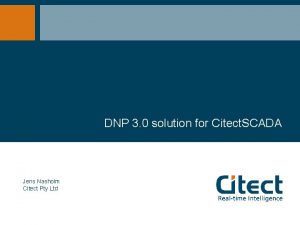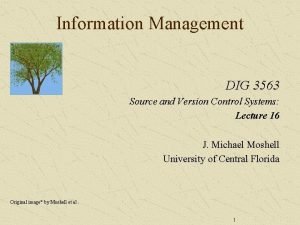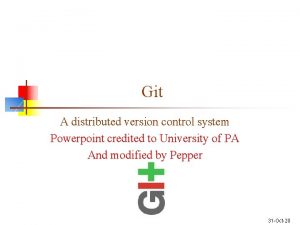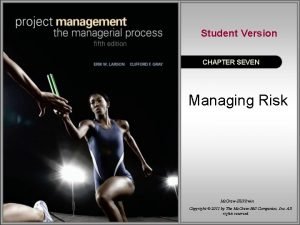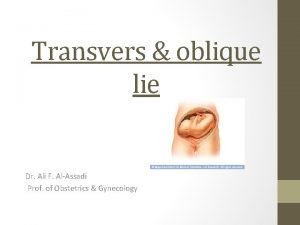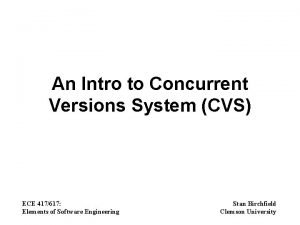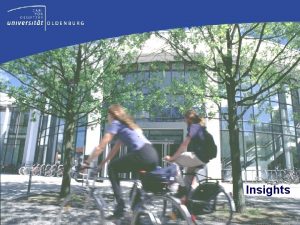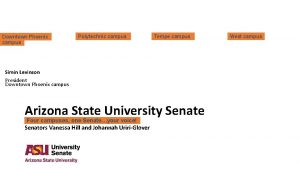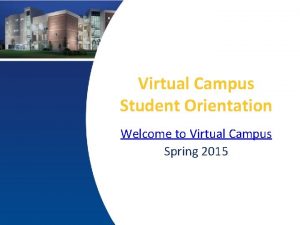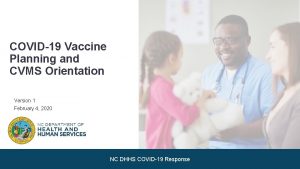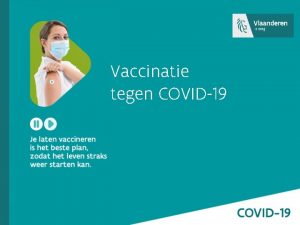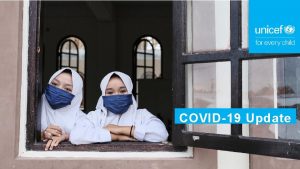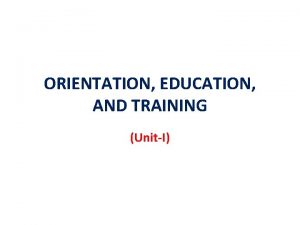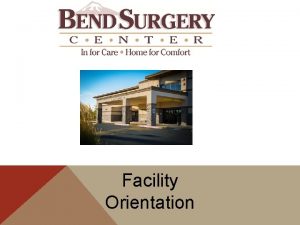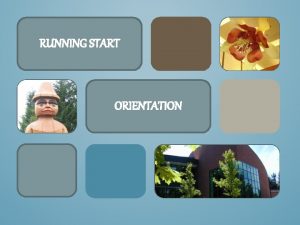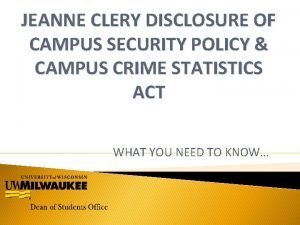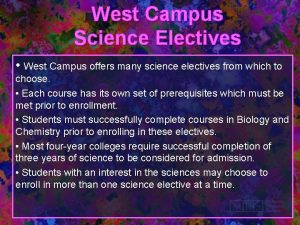COVID19 ORIENTATION to CAMPUS COVID19 ORIENTATION Version 3









































- Slides: 41

COVID-19 ORIENTATION to CAMPUS COVID-19: ORIENTATION Version 3. 4 August 5, 2021

COVID-19 WHAT IS IT? • Virus • Highly contagious • 3. 5 times more deadly than the seasonal flu virus • Has already developed numerous variants throughout the world, which allow it to spread quicker than the original sars-cov-2 virus (Covid-19). Listed below are the current variants of concern: • Alpha variant B. 1. 1. 7 (originated in the UK) • Beta variant B. 1. 351 (originated in South Africa) • Gamma variant P. 1 (originated in Brazil) • Delta variant B. 1. 617. 2 (originated in India)

WHY IS THIS SO CONCERNING? • With the variants spreading quicker; • It can put a strain on the healthcare resources (Covid-19 test sites, doctor’s offices, hospitals, labs) • It can lead to more hospitalizations • Potentially lead to more deaths • Existing health issues continue to compound, as surgeries would be cancelled and people will continue to avoid obtaining healthcare for routine preventative measures • It can put a strain on community resources (ex: taxi services and ambulance services take longer for turn around due to disinfectant processes, increased costs)

HOW DOES IT SPREAD? • Through respiratory droplets • Close prolonged contact (defined as 15 minutes within a 24 timeframe) • Touching an infected area and then touching your eyes, nose or mouth **It can survive on some surfaces outside the human body for up to 7 days, but specifically; Up to 3 hours as an aerosol Up to 72 hours on plastic and stainless steel Up to 4 hours on copper Up to 24 hours on cardboard 5 days on glass 4 days on wood ***Currently, there are no documented cases of spread from surfaces.

WHAT HAPPENS WHEN YOU GET EXPOSED? • The virus gets in your body through your eyes, nose, or mouth • It attaches to the ACE 2 receptors in the body, which is a protein that lines our organs (lungs, heart, blood vessels, kidneys, liver, GI tract) • Once it attaches to these proteins, it causes inflammation • This can overwhelm your immune system • Under certain conditions (increased risk factors discussed later), there is an increased risk of experiencing severe symptoms of the COVID-19, or even death

COVID-19 SYMPTOMS • Watch for symptoms. • Symptoms can vary from person to person and in different age groups. • Symptoms may take up to 14 days to appear after exposure to COVID-19. • The severity of COVID-19 symptoms can range from mild to severe, and in some cases, can lead to death. • Current information suggests most people don't experience severe illness or need to be hospitalized. SYMPTOMS CONTINUE

DIFFERENT CATEGORIES OF INFECTION Once you are infected you are either: Asymptomatic Pre-symptomatic Symptomatic (no symptoms for the duration) (Currently exhibiting no symptoms but will eventually develop symptoms) (Currently exhibiting symptoms) The World Health Organization (WHO) believes that once you are infected, you have the potential to infect others, regardless of the degree of symptoms you are exhibiting. In fact, the WHO also believes that you are more likely to infect others around the time you are experiencing the onset of symptoms. You still need to adhere to the Public Health directives and be mindful because research has showed that 17% of Covid-19 cases are asymptomatic. Numerous studies demonstrated the forward transmission of the virus from asymptomatic cases.

COMMON SYMPTOMS Shortness of breath Fever Cough (chills, sweats) (new or worsening) Sore throat Runny nose Headache

RECOVERY • Most people with COVID-19 recover or feel better within two weeks. • Severe cases can take longer than 6 weeks and may or may not cause permanent damage to your organs. • There is currently insufficient research, but some individuals are reporting lingering symptoms after COVID-19 infection (called long-haulers).

YOU SHOULD GET TESTED FOR COVID-19 • If you have symptoms of Covid-19 • If Public Health determines you are a close or moderate contact of a confirmed case of Covid-19 • If you were at a potential exposure site (see http: //www. nshealth. ca/covidexposures? title=&field_covid_exposure_zone_value=All&order=changed&sort=desc for updated list and directions) • If you have travelled and arrived in Canada recently • If you don’t have symptoms, it is recommended that you get routine testing to ensure you are not an asymptomatic carrier of the virus • If you are experiencing any other symptoms that concern you **If you are asked to isolate by 811, please inform your immediate supervisor and depending on the severity of your symptoms, discuss work options at that time

HOW DO YOU GET TESTED? • If you require transportation to the test site, call 1 -844 -996 -0694 and they will book your test and transportation at the same time • If you do NOT require transportation, you can book your test online at http: //www. nshealth. ca/coronavirustesting • If you are unable to access the internet, call 811 and speak directly to a nurse to book your Covid-19 test

CLARIFYING QUARANTINE (SELF-ISOLATION) VS ISOLATION Quarantine (Self-isolation) • Restricting activities and/or separating people who are not ill, but may have been exposed to COVID-19 (such as travellers) • This can take place in a designated facility or at home for 14 days Isolation • Separating people who are ill with symptoms of COVID-19, individuals that have been in close contact with a Covid-19 positive case and are awaiting test results, and/ or have tested positive themselves

VULNERABLE POPULATIONS THAT MAY PUT YOU AT INCREASED RISK FOR DEVELOPING SEVERE COVID-19 • older adults (increasing risk with each decade, especially over 60 years) • people of any age with chronic medical conditions (for example, lung disease, heart disease, high blood pressure, diabetes, kidney disease, liver disease, stroke or dementia) • people of any age who are immunocompromised, including those with an underlying medical condition (for example, cancer) or taking medications which lower the immune system (for example, chemotherapy) • people living with obesity (BMI of 40 or higher) • For a detailed list of those individuals that are more vulnerable please visit the following link: https: //www. canada. ca/content/dam/phacaspc/documents/services/diseases-maladies/vulnerable-populations-covid 19/vulnerable-eng. pdf

INDIVIDUALS MORE LIKELY TO BE EXPOSED TO COVID-19 • Their jobs or occupations require them to be in contact with large numbers of people, which increases their chances of being exposed to someone who has COVID-19 • They live in group settings where the COVID-19 virus may transmit more easily (for example, long-term care facilities, correctional facilities, shelters, or group residences) • They face barriers that limit their ability to access or implement effective public health measures (for example, individuals with disabilities who encounter non-accessible information, services, facilities, and/or language barriers)

RISKS • The overall risk for Canadians of acquiring Covid 19 remains high • The risk remains unique to the area and varies between and within communities

SETTINGS ASSOCIATED WITH INCREASED RISK • Closed spaces • Crowded spaces • Close contact scenarios, where minimum 1 metres (3 ft) distancing cannot be maintained • Close range conversations • Settings where there may be singing, shouting, or heavy breathing ***Try and avoid spaces where theses scenarios overlap, especially if masks are not being worn Ex: closed spaces that are crowded with close-range conversations

TO DECREASE RISK OF EXPOSURE • If you have symptoms, even if they are mild- stay home and get tested • Wear a mask when you experience symptoms and are in close contact with others • Ex: accessing medical care • Follow Public Health Directives • Physical distance, handwashing, wear a mask, adhere to gathering limits • For a detailed list go to https: //novascotia. ca/coronavirus/avoiding-infection/

WHAT HAS THE GOVERNMENT DONE TO HELP BREAK THE CYCLE OF INFECTION? Canada and the Nova Scotia governments have implemented a standard prevention method to limit the spread of coronavirus within our communities. This varies according to vaccination rates and is unique to each province. • Education, Public Health Directives, vaccines, asymptomatic testing, and communication related to exposures are all measures that have kept Nova Scotians safe.

VARIOUS VACCINES APPROVED IN CANADA Vaccines that have currently been approved in Canada are: • m. RNA vaccines • Pfizer-Bio. NTech • Moderna • Viral-vector vaccine • Astra. Zeneca • Janssen/ Johnson & Johnson

WHAT HAS ACADIA UNIVERSITY DONE TO MAKE IT SAFE FOR EVERYONE? We have followed the Hierarchy of Controls and implemented the following policies and protocols on campus: 1. Elimination Controls 2. Substitution Controls (not applicable) 3. Engineering Controls 4. Administrative Controls 5. PPE (personal protective equipment)

1. ELIMINATION CONTROLS 1. Daily self-assessment (If you feel unwell-STAY home or in your residence) 2. Option for virtual meetings for faculty, staff and students 3. Recommending routine testing for faculty, staff, and students 4. Implemented a voluntary Workplace Screening Program on campus (rapid testing) in collaboration with the Government of Nova Scotia

3. ENGINEERING CONTROLS 1. Physical distancing measures have been implemented according to Nova Scotia Public Health and the Government of Nova Scotia 2. Restricting numbers of occupants in elevators and small spaces 3. Physical barriers have been considered and implemented where physical distancing is not possible (following provincial directives) 4. Increased the number of handwashing stations in high traffic areas 5. Re-routed ventilation to bring in more fresh air into the buildings on campus

4. ADMINISTRATIVE CONTROLS 1. Implemented policies, procedures, and protocols to maintain safety and compliance with provincial directives 2. Highly encouraged and promoted COVID-19 vaccinations for campus members 3. Educated faculty, staff and students on COVID-19 awareness, prevention and importance of compliance 4. Increased number of cleanings in high touch areas and high traffic areas (above routine cleaning) such as doorknobs, light switches, and faucets 5. Advanced planning, clear communication, and appropriate training, regarding addressing potential positive COVID-19 cases

5. PERSONAL PROTECTIVE EQUIPMENT (PPE) • PPE is used when other controls cannot be met • Wear a mask • Launder non-medical cloth masks appropriately after each use • Face shields, gloves, gowns, and 3 -ply disposable face masks will be supplied to those individuals that may encounter someone with potential symptoms while in the course of their duties (e. g. , quarantine/ self-isolation/ isolation periods)

WHAT CAN YOU DO TO PREVENT INFECTION? Stay informed and follow Canadian and Nova Scotia Public Health directives Practice approximate 1 metre (3 -foot) distancing (when possible) on campus and 2 metre distancing in the maskfree study spaces Clean high touch areas in your living and working space routinely

WHAT ELSE CAN YOU DO? Practice good cough etiquette • Use a tissue - Wash your hands • Cough or sneeze into your elbow - Wash your hands • Avoid touching your eyes, nose, and mouth - Wash your hands

IMPORTANCE OF A MASK Wear a mask especially when you are unable to maintain physical distancing of 1 metre (3 feet). • Review and follow Acadia’s COVID-19 Mask Policy (see link below). • Anyone who needs an exemption from wearing a mask is asked to contact Safety and Security for assistance (see contact info in resource section slide 31 below).

WHAT ELSE CAN YOU DO? Stay healthy to maintain a good immune system • Exercise routinely • Maintain good nutritional habits • Get adequate and routine sleep Get your COVID-19 vaccination

MOST IMPORTANTLY Practice good hand hygiene. Wash your hands… • Before and after preparing food • After touching pets • After handling waste or dirty laundry • After going to the washroom • When your hands look dirty • After touching surfaces used by others

CAMPUS SIGNAGE EXAMPLES:

CONTACT TRACING ON CAMPUS • CCTV • RFID scanners at building entrances, • Class attendance records, • Acadia Wi-Fi, and • Electronic Access Controls.

COVID-19 APP • Ensure to be notified of any COVID-19 exposure immediately • Download the COVID APP today https: //novascotia. ca/coronavirus/covid-alert-app/

PERSONAL SAFETY DURING COVID-19 • It is important to know that in the conditions of an evacuation or fire alarm you should find the nearest exit and evacuate in a calm manner. In the interest of safety, it is not necessary to follow the one -way traffic pattern, if one exists in the building, which you are in. • Regarding masks, if you find someone who is incapacitated or vomiting while wearing a mask, please remove their mask so they do not aspirate and potentially die.

WHAT IS EXPECTED FROM ACADIA UNIVERSITY FACULTY & STAFF? 1. All members of the Acadia community are required to do a daily self-assessment of symptoms and avoid leaving home or residence, if they feel unwell. The Self-Assessment is available on the COVID-19 website. If faculty & staff answer yes to any symptoms, they are advised to stay home and follow the instructions on the website. 2. Before returning to campus, Acadia’s faculty and staff should familiarize themselves with the updated Campus Reopening Framework 3. Before returning to campus, Acadia’s faculty and staff are highly encouraged to be fully vaccinated for COVID-19. 4. Acadia faculty & staff are required to adhere to Acadia’s Mask Policy. If you need an exemption, please refer to Acadia’s Mask Policy for direction.

EXPOSURE SCENARIO FLOWCHART

WHAT IS EXPECTED FROM ACADIA STUDENTS? 1. Acadia students are required to do a daily self-assessment of symptoms and avoid leaving home or residence, if they feel unwell. The Self-Assessment is available on the COVID-19 website. If you answer yes to any symptoms you are advised to stay home and follow the instructions on the website. 2. Before returning to campus, Acadia’s students are highly encouraged to be fully vaccinated for COVID-19, or actively pursuing the vaccination process. 3. You are required to adhere to Acadia’s Mask Policy. If you need an exemption, please refer to Acadia’s Mask Policy for direction. 4. Students returning to campus are required to review and confirm their commitment to the Student COVID-19 Safety Pledge, located in ACORN within the HUB.

REMEMBER MULTIPLE STRATEGIES ARE MORE EFFECTIVE

FALL 2021 OVERVIEW OF THE GUIDELINES • Approximate 1 metre physical distancing on campus will be encouraged and will remain best practice (according to the Government of Nova Scotia) • 2 metre physical distancing will remain in the mask-free study spaces • Classroom seating and maximum occupancy will be maintained at pre-COVID-19 levels (following Government of Nova Scotia guidelines). Disinfectant will be provided and is to be used by students and staff between classes to ensure their personal space is clean prior to use. • Masks will remain in all classrooms, in all common areas on campus, and where physical distancing can not be maintained • Routine COVID-19 testing will be encouraged for faculty, staff, and students to limit exposure and potential spread • COVID-19 vaccinations are not only encouraged, but expected from all faculty, staff, and students ***These guidelines continue to evolve and will be reassessed on campus according to the Government of Nova Scotia guidelines, vaccination levels on campus, along with the current COVID-19 situation in and around our campus and community.

UP-TO-DATE AS OF AUGUST 5, 2021 • See Nova Scotia Government COVID-19 website for up-to-date information at https: //novascotia. ca/coronavirus/ • Please refer to Acadia’s new Vaccination Policy for expectations of returning to campus at https: //www 2. acadiau. ca/files/COVID 19/2021 -0722%20 Vaccination%20 Policy%20 and%20 Approach. pdf

RESOURCE & REFERENCE LINKS • Acadia’s Self-Assessment & Self Isolation Guide - https: //www 2. acadiau. ca/covid-19/self-assessment. html • Nova Scotia’s 811 Self-Assessment Guide - https: //when-to-call-about-covid 19. novascotia. ca/en • Acadia’s Student Health Centre - https: //www 2. acadiau. ca/student-life/health-wellness/clinic. html • Acadia’s Counselling Centre - https: //www 2. acadiau. ca/student-life/health-wellness/mental-health. html • Nova Scotia Healthy Minds Online Support – https: //healthymindsns. ca/schools/acadia/ • Acadia’s Chaplaincy – https: //chapel. acadiau. ca/chaplain. html • Acadia’s Mask Policy - https: //www 2. acadiau. ca/covid-19/health-and-safety. html • Acadia’s Campus Reopening Framework - https: //www 2. acadiau. ca/files/COVID-19/Campus. Reopening. Framework. pdf • Acadia’s Staff & Faculty Return to Campus Agreement https: //forms. office. com/Pages/Response. Page. aspx? id=7 sy 4 OP 2 s 60 CXLl. Utf. NVIo 72 s. HQMh 1 ht. Pvrh. Wm. NOcup. BUMVAx. R 0 t. HTDM 2 Mj. NGRERVR 1 VPSVl. KRlp. LMS 4 u • Acadia’s Safety and Security- 902 -585 -1103 • Acadia’s Occupational Health Nurse COVID-19 cell: 902 -698 -9221

COVID-19 ORIENTATION TO COVID-19 EDUCATION CONTENT REFERENCES • https: //healthydebate. ca/2020/12/topic/covid-long-haul-effects/ • https: //health. clevelandclinic. org/how-long-will-coronavirus-survive-on-surfaces/ • https: //novascotia. ca/coronavirus/masks/ • https: //theconversation. com/what-is-the-ace 2 -receptor-how-is-it-connected-to-coronavirus-and-why-might-it-be-key-to-treating-covid-19 -the-experts-explain-136928 • https: //www. canada. ca/en/public-health/services/diseases/coronavirus-disease-covid-19. html • https: //www. canada. ca/en/public-health/services/publications/diseases-conditions/vulnerable-populations-covid-19. html • https: //www. cdc. gov/coronavirus/2019 -ncov/need-extra-precautions/people-with-medical-conditions. html • https: //www. hopkinsmedicine. org/health/conditions-and-diseases/coronavirus/diagnosed-with-covid-19 -what-to-expect#: ~: text=Those%20 with%20 a%20 mild%20 case, will%20 die%20 from%20 the%20 disease. • https: //www. medrxiv. org/content/10. 1101/2020. 05. 10. 20097543 v 3 • http: //www. phsa. ca/health-info/post-covid-19 -care-recovery • https: //www. nejm. org/doi/10. 1056/NEJMc 2004973 • https: //www. who. int/ • https: //www 2. acadiau. ca/covid-19. html • https: //www. canada. ca/content/dam/phac-aspc/documents/services/publications/diseases-conditions/people-high-risk-for-severe-illness-covid-19 -eng. pdf • https: //www. who. int/emergencies/diseases/novel-coronavirus-2019/question-and-answers-hub/q-a-detail/coronavirus-disease-covid-19
 What do if test positive covid19
What do if test positive covid19 Http://apps.tujuhbukit.com/covid19/
Http://apps.tujuhbukit.com/covid19/ Vaksin covid19
Vaksin covid19 Do if you covid19
Do if you covid19 Covid19 athome rapid what know
Covid19 athome rapid what know Polycentric example company
Polycentric example company Esisr
Esisr Dmbok summary
Dmbok summary Nikshay version 2
Nikshay version 2 Apostles creed prayer
Apostles creed prayer Ml lite version
Ml lite version Exemple d'analyse environnementale iso 14001 version 2015
Exemple d'analyse environnementale iso 14001 version 2015 Finn no english version
Finn no english version Jack and the beanstalk conflict
Jack and the beanstalk conflict National numeracy progressions
National numeracy progressions Hypothesis space in machine learning
Hypothesis space in machine learning Own version of creation
Own version of creation Ospf version 2
Ospf version 2 Eviews student
Eviews student Laragon download
Laragon download Https//ab-hwc.nhp.gov.in
Https//ab-hwc.nhp.gov.in The two households in romeo and juliet
The two households in romeo and juliet Windows embedded standard 2010
Windows embedded standard 2010 Sistema nominal pai 2.0
Sistema nominal pai 2.0 Exemple politique environnementale iso 14001 version 2015
Exemple politique environnementale iso 14001 version 2015 Citect pty ltd
Citect pty ltd Alienbrain version control
Alienbrain version control Eview 4 download
Eview 4 download Internal podalic version
Internal podalic version Uft1
Uft1 Version control powerpoint
Version control powerpoint Fhir version history
Fhir version history Articles added to complete or enhance an outfit
Articles added to complete or enhance an outfit Sds2 student version
Sds2 student version Nhdplus version 2
Nhdplus version 2 How to show toolbar in word 2016
How to show toolbar in word 2016 Risk student version
Risk student version Windows longhorn logo
Windows longhorn logo Oblique position of fetus
Oblique position of fetus D365 one version
D365 one version Concurrent version system
Concurrent version system Ukons triage tool version 3
Ukons triage tool version 3
